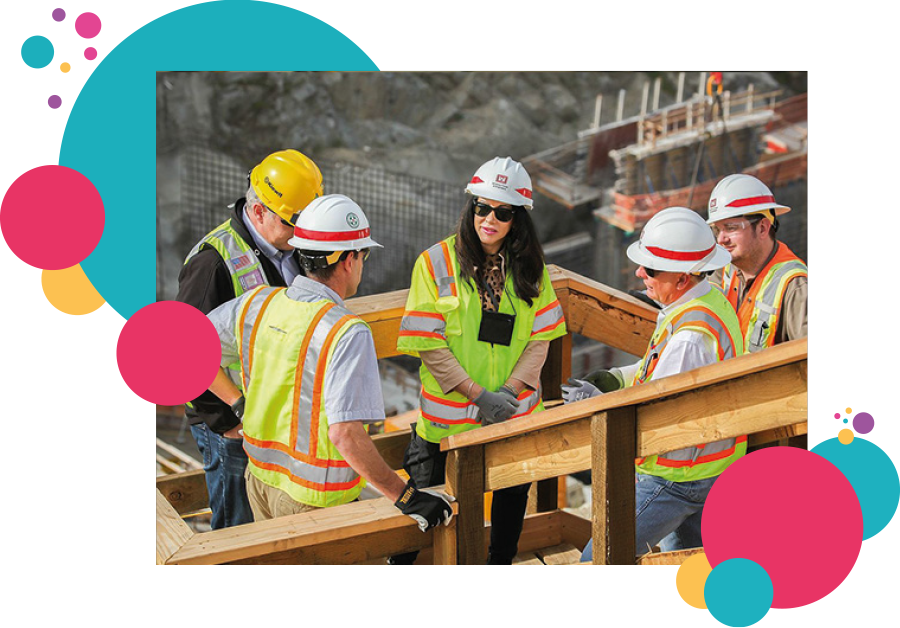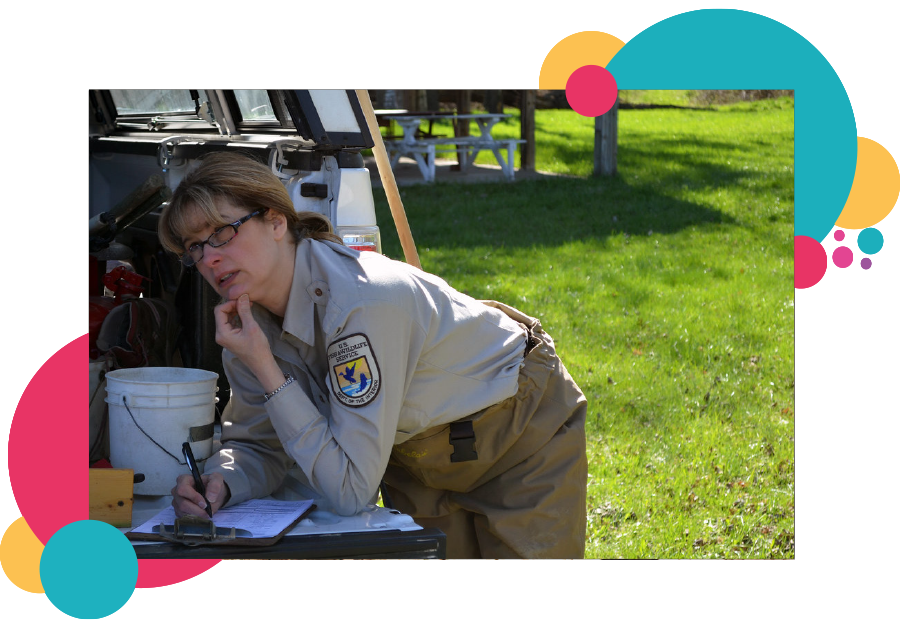How to conduct a dynamic risk assessment
For lone workers, a dynamic risk assessment can be the difference between risking injury and working safely. Here, we’ll discuss the differences between the standard risk assessments your organisation conducts and a dynamic risk assessment that is conducted in the field. You’ll also see the value of dynamic risk assessments and find out how to train your staff to carry them out. So, let’s get started!
What is a risk assessment?
A risk assessment is a process of identifying, measuring and evaluating risk for individuals, organisations, assets and the environment as a result of a particular activity, role or undertaking.
The goal of a risk assessment is to understand the potential risks, measure what you are doing to prevent that risk, and decide whether you need to do more. You’ll look at what controls you have in place to prevent risk and measure whether they are appropriate and sensible, and whether you might need to employ further controls to fully protect your staff and organisation.
Risk assessments are a legal requirement for all employers and self employed people. As the Health and Safety Executive note: “It is a legal requirement for every employer and self-employed person to make an assessment of the health and safety risks arising out of their work.”
If you have five or more employees, it is also a legal requirement to record your risk assessments for future appraisal and so they can be consulted in the event of an incident.
It is the responsibility of the employer to carry out risk assessments and in the event of an incident, you will be accountable. Ensure you and your employees are safeguarded by carrying out thorough risk assessments, and consider collating that information alongside best practices in a lone working policy.
What do I need to record in my risk assessment?
You need to record the findings of your risk assessments: what the risks to your employees are, the steps you are taking to control and prevent risk and what further steps you will be taking to prevent risk.
You also need to record any particularly at risk employees in your organisation. Lone workers are often at greater risk and if your risk assessment finds that certain employee groups are more at risk this needs to be accounted for.
Remember that your risk assessments need to cover employees across your organisation and so separate risk assessments may need to be undertaken and recorded depending on job role, location or for other determining factors. Using a risk assessment template is a great place to start but remember that every job is different and carries with it it’s own specific risks.
Risk assessments are not intended to make your life more difficult - they are documents intended to help identify and prevent risk, giving you the insight to improve health and safety in your workplace. These need to be usable documents that are easy to understand and can communicate and help effectively manage risk for all your workers.
What is a dynamic risk assessment?
A dynamic risk assessment is the process of identifying, measuring and evaluating risk in real-time, while working. A dynamic risk assessment builds on the work of existing risk assessments, though are conducted in the field, most likely by the worker carrying out a job.
By encouraging workers to be aware of the changing nature of risk and identify potential hazards when they arise, dynamic risk assessment skills give lone workers the tools to respond appropriately to developing situations. Using a dynamic risk assessment to judge whether a task needs to be approached differently or avoided all together can mean the difference between working safely or risking injury.
Why would I need to do a dynamic risk assessment?
The nature of many jobs, particularly those that employ lone workers is dynamic and ever-changing. Think of charity workers soliciting donations on the street - working with the public can present many unexpected risks - or security staff operating after hours. There are some jobs which are dynamic and uncontrollable by their nature.
A dynamic risk assessment accounts for risk in a live environment that has factors which may not have been possible to account for in a standard risk assessment. Regular risk assessments will always be a valuable and legally required part of employment law - a dynamic risk assessment allows your staff to go further and be prepared to assess developing situations as they arise.
The purpose of dynamic risk assessments is to enable your workers to quickly assess a situation and take steps to keep themselves and others safe if necessary.
When might I need a dynamic risk assessment?
Dynamic risk assessments should be carried out on the spot by workers as a situation, job or location changes.
For example, in an incident in Norfolk, a man was crushed to death between two vehicles while working on a construction site. One vehicle became stuck in mud and was attempted to be towed by a second.
In the inquest, it was found that numerous risks were ignored and that the men should not have attempted to recover the vehicle themselves. In this case, had the workers conducted a dynamic risk assessment, they would have found that it was not safe to attempt this work, and the fatal injury could have been avoided.
Dynamic risk assessments should be carried out by staff entering people’s homes or new locations; for example, housing association workers conducting home visits. A dynamic risk assessment may include a consideration of the property, whether it is safe to enter, whether the people they are with are potentially aggressive, and whether there are sufficient safeguards in place to protect themselves in the event of an incident.
How to carry out a dynamic risk assessment.
Carrying out a dynamic risk assessment is a practice all staff should be encouraged to perform. In essence, performing a dynamic risk assessment is the practice of conducting an on the spot risk assessment that responds to developing situations.
To carry out a dynamic risk assessment, an individual should:
Identify the risk. Staff should first be able to spot and acknowledge a source of risk. This might be a known violent person entering your retail location, a piece of equipment being found faulty, or a second person not turning up to help with a task. Identifying risk dynamically is extremely important - workers should be attuned to the situation and be able to identify risk as it occurs.
Assess the risk. Workers should then measure the risk of the developing situation. Is the risk large enough to merit further consideration or immediate action. Does the violent person entering the retail location need to be asked to leave immediately? How large is the risk of entering a given property?
Consider the tools they have to mitigate the risk. Can a worker safely continue with a task, and do they have the controls or tools they need to prevent or minimise risk? In the retail location, do they have security staff on hand they can alert to potential danger? In a forestry environment where they are operating at height, do they have the proper safety equipment and support to work safely?
Consider whether it is safe to proceed and either take the necessary steps to make a task safe or delay the task until it can be made safe, liaising with superiors and colleagues if possible.
If the dynamic risk assessment your staff member has carried out has found risk, and they have the means necessary to reduce that risk to safe levels, they should do so. This might mean phoning in an additional member of staff to monitor a violent person and deter possible incident or calling a superior for guidance and requesting additional equipment.
One of the other purposes of a dynamic risk assessment is to highlight if a situation is too dangerous to proceed and allow staff to make an informed judgement call. This might mean walking away from a potential unsafe house visit or delaying work until safe equipment is sourced.
Remember that even if working conditions have been assessed for risk prior to the work being carried out, this might not be enough to protect staff in dynamic, changing conditions. A dynamic risk assessment allows your staff to react to developing situations and work safely at all times.
It is worth noting that dynamic risk assessments conducted by employees do not need to be recorded though any findings or insights discovered as a result of a dynamic risk assessment should absolutely be communicated back to superiors and other staff. The lessons learned from a dynamic risk assessment can be used for regular, recorded risk assessments and to develop an up-to-date lone working policy.
Every incident and risk assessment is an opportunity to learn and improve: dynamic risk assessments are an extension of this.
Confused about Dynamic Risk Assessments? Want to know how more on how to make your staff safer?
Tips for training lone workers to carry out dynamic risk assessments.
The ability to conduct dynamic risk assessments should be a core part of your employees skill set, particularly for lone workers who may conduct dynamic risk assessments multiple times a day. Chances are, your staff are already employing some elements of dynamic risk assessments though there’s always room for improvements.
Train your staff in how to identify and spot risk. This might mean training in interacting with the public to spot signs of aggression and frustration, or situational awareness training. As with all risk, awareness is key, and so providing a thorough standard risk assessment and lone working policy that outlines what to look for is also key.
Provide a working example of when a dynamic risk assessment would be necessary. Help your staff understand this is not an extra bit of red tape. Dynamic risk assessments can take just a few moments to perform and can be life saving.
Part of conducting effective dynamic risk assessments is the ability to slow down and assess the situation rationally and calmly. Crisis management skills and training in this area is invaluable in helping lone workers dynamically assess risk and determine the correct course of action. Empower your staff to take a moment to step back and assess a situation before proceeding. Rushing into tasks without assessing risk dynamically can be fatal.
The importance of dynamic risk assessments for lone workers.
The nature of lone working means workers are often exposed to changing, difficult to predict situations that may differ from those accounted for in your standard risk assessment.
Lone workers will often not have the direct, immediate support of a co-worker or manager due to the nature of lone working, and so developing the skills to independently conduct dynamic risk assessments is crucial to ensuring safety. If a lone worker in social care faces potential violence from a service user, a dynamic risk assessment can help them figure out what the right course of action is: whether its asking for help or amending the task they are performing.
Perhaps most importantly, you need to give your staff the tools and backing to respond to the findings of their dynamic risk assessments effectively. This means giving your staff the authority and encouragement to walk away from unsafe situations or request backup. It might also mean providing tools such as Safepoint’s lone worker safety solution so that employees can stay in contact, let their location be known, and be able to trigger an alarm in the event of an emergency.
By using best practices such as dynamic risk assessments and lone worker protection platforms like Safepoint, you can ensure your lone workers are safeguarded, no matter how a situation might develop.





